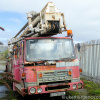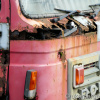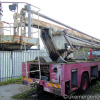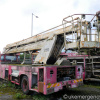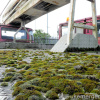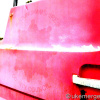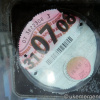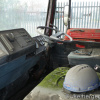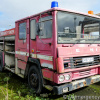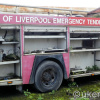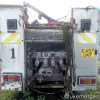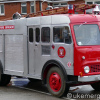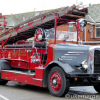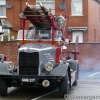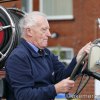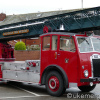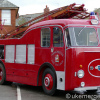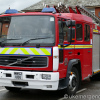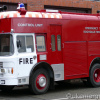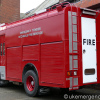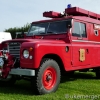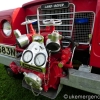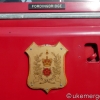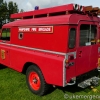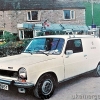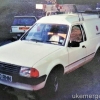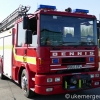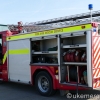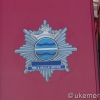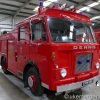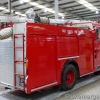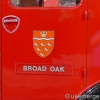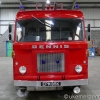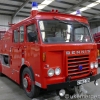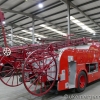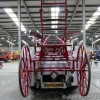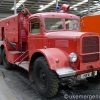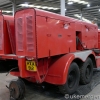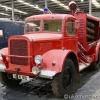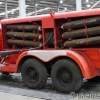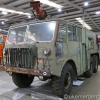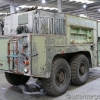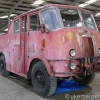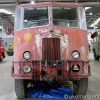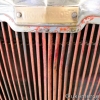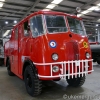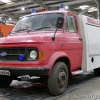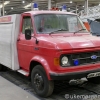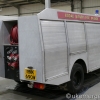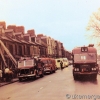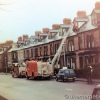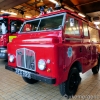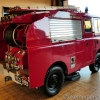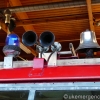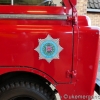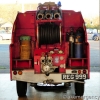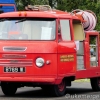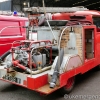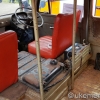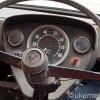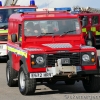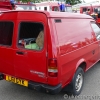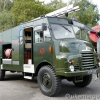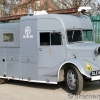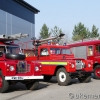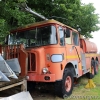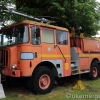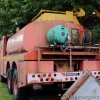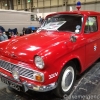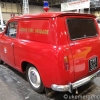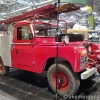Category: Classic Fire
Classic and vintage fire appliances. Some are no longer in existence, some are still around today and preserved.
HXA 912 Austin K6 CO2 Tender
HXA 912
Austin K6 CO2 Tender
This truck has four banks of six 60lb CO2 cylinders. Each bank of cylinders has its own operating lever situated on the outside of the cylinder housing and an effective discharge time of 2 minutes. It was built on an Austin K6 3ton chassis and was the first Crash Tender to employ CO2 gas only as an extinguishing medium. It came into service in 1945. The total discharge of the tender is approximately 11,500 cubic feet of CO2 gas. Seen at the Museum of RAF Firefighting.
Thorneycroft Nubian TFA 6×6
Thorneycroft Nubian TFA 6×6
The MK7 was introduced in 1965 to supplement the MK6 fleet, and basically consisted of a DP2 chassis fitted with a Rolls Royce B81 Petrol engine and MK6 foam equipment. With it’s improved reliability, a suction eye and water pumping capability, the MK 7 was a more versatile primary one foam tender. It was also easier to transport by air and saw service world wide. This vehicle has a 700 gallon water tank, a foam liquid tank capacity of 110 gallons and a foam output of 5000 gallons per minute through monitor and two side-lines or through double-jet monitor. Seen at the Museum of RAF Firefighting.
Mk 5 Thorneycroft/Rolls Royce foam tender
Mk 5 Thorneycroft/Rolls Royce foam tender
The Mk5 Crash Tender was one of the first of the post war vehicles entered service in 1952. It carried 400 gallons of water and 60 gallons of foam. Primarily a RAF appliance this vehicle could also be used for domestic (structural) firefighting. It had a foam output of 2300 gallons per minute through two hand side-lines. Seen at the Museum of RAF Firefighting.
Mk 5 Thorneycroft/Rolls Royce foam tender
Mk 5 Thorneycroft/Rolls Royce foam tender
The Mk5 Crash Tender was one of the first of the post war vehicles entered service in 1952. It carried 400 gallons of water and 60 gallons of foam. Primarily a RAF appliance this vehicle could also be used for domestic (structural) firefighting. It had a foam output of 2300 gallons per minute through two hand side-lines. Seen at the Museum of RAF Firefighting.
These historic photos dating from around 1971 show the fire brigade r..
These historic photos dating from around 1971 show the fire brigade responding to a fire call as a crowd gathers on the pavement. They are at a ‘persons reported’ call where there is information that someone may be trapped in a house fire. Two ambulances have also arrived on scene to deal with any casualties. Furthermore two police cars have also arrived to assist. The scene is at Avenue Road in Gateshead.
BBB 22J is the ERF fire engine (in brighter red)
ATN 336B is the AEC fire engine, recognised by the non black roof and conical blinker lights. This was always a Fossway engine but must have been in the reserve fleet at the time. It is maroon and parked immediately outside the house.
EBB 783 is an Emergency Tender ‘Charlie 4’ from Pilgrim Street, Newcastle. It is the maroon vehicle parked on the opposite side of the street.
The two ambulances are based at Gateshead.
WPT 214J is a British Leyland Mini Van from 1971. A second Mini Van is seen in the foreground. From 1969 the Austin and Morris badges were dropped and they were just known as the Mini Van. It is either a 848cc or 998cc version which were cosmetically the same. The vehicles are operated by Durham Constabulary during the short period of time when they covered Gateshead. In 1969 Gateshead county borough police merged into Durham county but just five years later in 1974 Gateshead was taken over by the newly formed Northumbria Police as part of the local authority boundary changes and the formation of the county of Tyne and Wear.
8769 W Sanderson Brothers and Newbould Limited Commer PB
8769 W
Sanderson Brothers and Newbould Limited
Commer PB
Built in 1960 and has covered only 631 miles as of 2019. The vehicle left the factory in 1960 as a standard diesel engine van. It was one of a batch of three that were converted by special order to works fire engines for Sanderson and Newbould of Sheffield. The chassis was extended to house the Coventry Climax pump and part of the rear roof was moved forward to make a crew cab behind the driver. It was sold to Adam Industries of Pudsey, West Yorkshire, before passing into private ownership in 1995. It was bought in 2011 by the current owner who has restored it. Notice how it has amber lights to the front for emergency use, pre-dating the use of blue lights.

